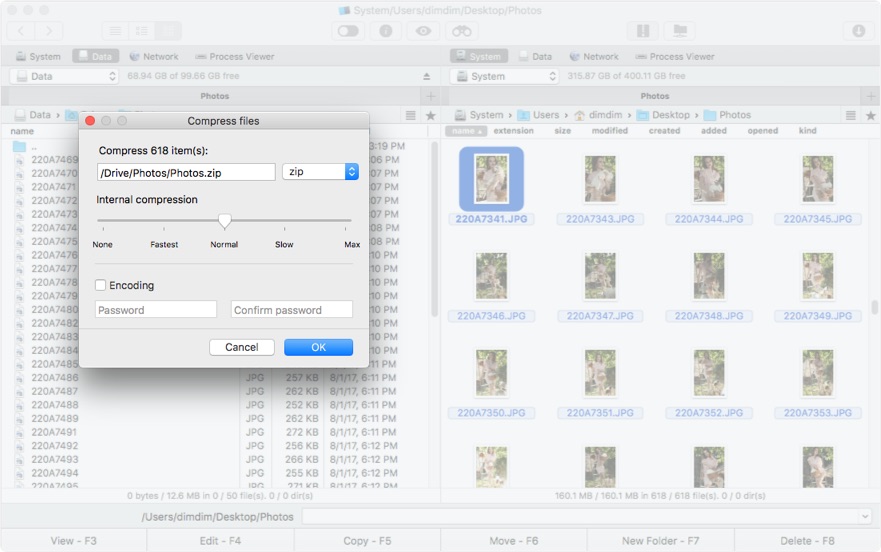
- #Replacing finder with commander one how to#
- #Replacing finder with commander one update#
- #Replacing finder with commander one full#
- #Replacing finder with commander one Offline#
- #Replacing finder with commander one windows#
If the above method fails to fix the corrupted files, then you can run a DISM (or Deployment Image Servicing and Management) scan instead.
#Replacing finder with commander one windows#
Or use this command instead to create an SFC log file on the desktop: findstr /c:"" %windir%\Logs\CBS\CBS.log >"%userprofile%\Desktop\sfclogs.txt" Run DISM Commands to Restore Corrupted FilesĭISM (Deployment Image Servicing and Management) is a command tool developed for administrators and experts to scan and repair Windows images including, Windows Recovery Environment, Windows Setup, and Windows PE (WinPE). Here replace C:\SFClogs\sfclogs.txt with a path to the location where you want to create the log file. You can also create a separate log file in a specific location using the below command: findstr /c:"" %windir%\Logs\CBS\CBS.log > "C:\SFClogs\sfclogs.txt" Open the File Explorer and navigate to the above location and double-click on the ‘CBS.log’ text file view the SFC repair details in Notepad. You find the SFC scan log file in the following location: C:\Windows\Logs\CBS View and Analyze System File Checker logsĪfter performing every scan, System File Checker generates a log file named ‘CBS.log’ to list every file that was scanned and every file that was repaired. sfc /OFFLOGFILE – This parameter enables logging of the SFC scan results by specifying a log file path.
#Replacing finder with commander one Offline#
You must specify the location of the offline boot directory.

– sfc /SCANFILE=C:\Windows\SysWOW64\crypt32.dll
#Replacing finder with commander one full#
Make sure to specify the full path of the file or folder. sfc /VERIFYONLY – Only scans the integrity of the system or protected files but it doesn’t perform any repairs.sfc /scannow – Scans all system files and replaces corrupted files if possible.However, there are multiple syntaxes or parameters you can use with the command: The above command performs a basic scan and resolves most of the problems. Details are included in the CBS.Log %WinDir%\Logs\CBS\CBS.log” – If this is the case, then you can manually repair them (which is also covered in this article) or use other following methods. “Windows Resource Protection found corrupt files but was unable to fix some of them.“Windows Resource Protection was unable to perform the requested operation” – If you see this message, you need to run the SFC scan on safe mode, which will be covered in the later section of this article.For example C:\Windows\Logs\CBS\CBS.log.” – It means the corrupted files and other issues were found and fixed. Details are included in the CBS.Log windir\Logs\CBS\CBS.log. “Windows Resource Protection found corrupt files and successfully repaired them.“Windows Resource Protection did not find any integrity violations.” – It means no problems were found.Once the scan is complete, you will see one of the following messages. If any corrupted or missing files are found, it will automatically repair/replace them with a cached copy.ĭepending on files and apps on your computer, the process will take some time to finish. The tool will check for errors or corruption of system files. Once the elevated Command Prompt launches, type the following command and press Enter: sfc/ scannow Then, select ‘Run as administrator’ from the right pane. To do that, click the Start menu or the search icon in the taskbar and search for ‘Command Prompt’ or ‘cmd’.
#Replacing finder with commander one how to#
Let use see how to do that in detail:įirst, launch the Command Prompt with administrative privileges access. SFC scan is the most common method to fix corrupt or missing system files in modern Windows computers.


SFC, which is short for System File Checker is a built-in command-line tool that allows you to detect and repair corrupt system files in Windows. Here in this article, we will explore all of them.
#Replacing finder with commander one update#
There are a number of reasons for which Windows files can get corrupted such as power outages, viruses, malware, hardware problems, update failures, software crashes, etc.įortunately, there are several ways to repair or replace corrupted files in Windows 11. If you are experiencing Window crashes, random errors, app crashes, or you’re getting a blue screen error, it may be due to corrupted system files or missing files on your Windows 11 PC.


 0 kommentar(er)
0 kommentar(er)
